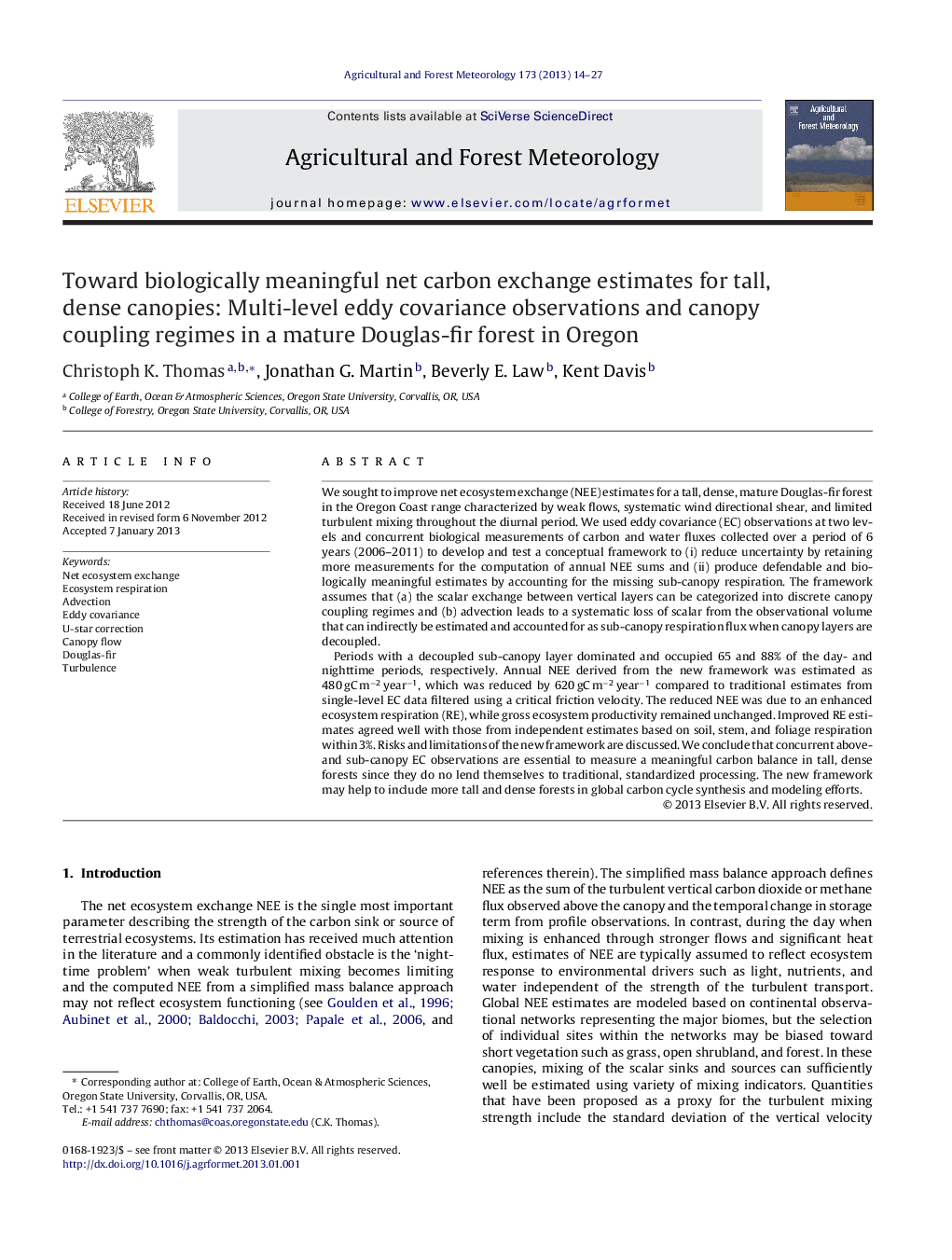| کد مقاله | کد نشریه | سال انتشار | مقاله انگلیسی | نسخه تمام متن |
|---|---|---|---|---|
| 81789 | 158351 | 2013 | 14 صفحه PDF | دانلود رایگان |

We sought to improve net ecosystem exchange (NEE) estimates for a tall, dense, mature Douglas-fir forest in the Oregon Coast range characterized by weak flows, systematic wind directional shear, and limited turbulent mixing throughout the diurnal period. We used eddy covariance (EC) observations at two levels and concurrent biological measurements of carbon and water fluxes collected over a period of 6 years (2006–2011) to develop and test a conceptual framework to (i) reduce uncertainty by retaining more measurements for the computation of annual NEE sums and (ii) produce defendable and biologically meaningful estimates by accounting for the missing sub-canopy respiration. The framework assumes that (a) the scalar exchange between vertical layers can be categorized into discrete canopy coupling regimes and (b) advection leads to a systematic loss of scalar from the observational volume that can indirectly be estimated and accounted for as sub-canopy respiration flux when canopy layers are decoupled.Periods with a decoupled sub-canopy layer dominated and occupied 65 and 88% of the day- and nighttime periods, respectively. Annual NEE derived from the new framework was estimated as 480 gC m−2 year−1, which was reduced by 620 gC m−2 year−1 compared to traditional estimates from single-level EC data filtered using a critical friction velocity. The reduced NEE was due to an enhanced ecosystem respiration (RE), while gross ecosystem productivity remained unchanged. Improved RE estimates agreed well with those from independent estimates based on soil, stem, and foliage respiration within 3%. Risks and limitations of the new framework are discussed. We conclude that concurrent above- and sub-canopy EC observations are essential to measure a meaningful carbon balance in tall, dense forests since they do no lend themselves to traditional, standardized processing. The new framework may help to include more tall and dense forests in global carbon cycle synthesis and modeling efforts.
► New framework accounts indirectly for advective losses using 2 EC heights.
► Exchange regimes represent both biological signals and physical transport.
► Alternate generating mechanisms for turbulent mixing such as directional shear.
► New NEE was reduced by 620 gC m−2 year−1; about 50% compared to standard processing.
► Method may help incorporate dense and tall canopies into synthesis efforts.
Journal: Agricultural and Forest Meteorology - Volume 173, 15 May 2013, Pages 14–27